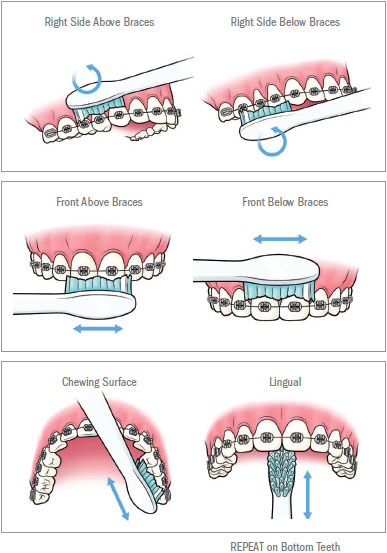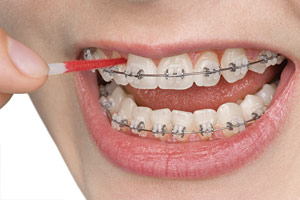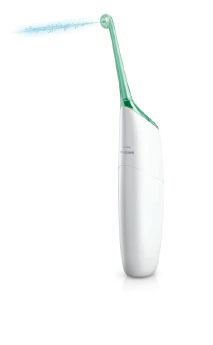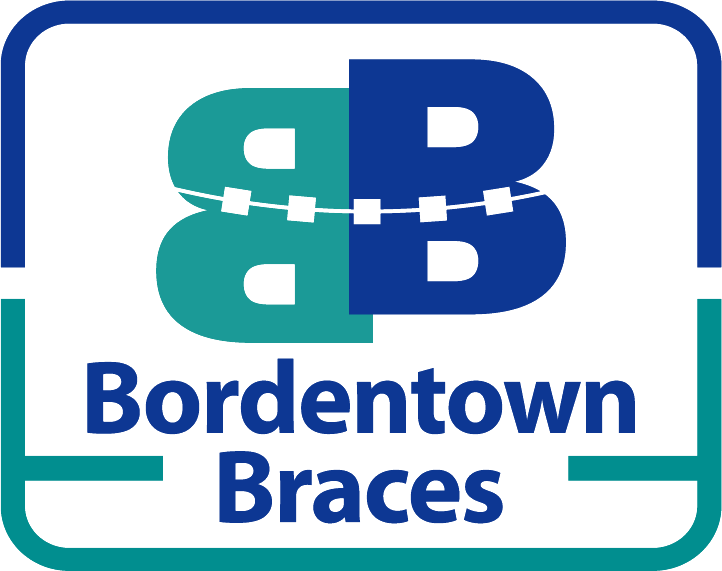Brushing and Flossing

Achieving healthy, beautiful smiles is a team effort that involves us, your orthodontic team, your general or pediatric dentist and you, the patient. Dr. Newman will provide the expertise, the treatment plan and the techniques to straighten teeth and align the jaws. Your dentist helps make sure that teeth and gums stay clean and healthy. As the patient, you must cooperate by following your dentist’s and Dr. Newman’s instructions carefully so that your teeth and jaws move in the way desired and on the prescribed schedule. Because dental hygiene is so important, regular visits to see your dentist must continue every six months during your orthodontic treatment (or more often, if recommended). It is essential that you avoid foods which may damage orthodontic appliances. You must also maintain a healthy, nutritional diet to achieve the best possible results from treatment. A good diet provides essential nutrients to bones and tissues undergoing change during orthodontic treatment.
Plaque is the Enemy
Plaque is a sticky, colorless film that collects on your teeth. It’s composed of bacteria, food debris and saliva. When plaque and trapped food are left on your teeth and around your braces, they can cause cavities, swollen gums, bad breath, and permanent stain marks on your teeth.
When to Clean?
You should brush your teeth thoroughly after every time you have a meal or snack. Ideally, at least 4 times a day (In the morning after breakfast, after lunch or right after school, after supper and at bedtime).
If you can’t brush right away after a meal, be sure to at least rinse your mouth well with water until you can brush. Carry a travel toothbrush so that you can brush when away from home. At least once every day, clean between your teeth first, then brush your teeth and braces thoroughly until they are spotlessly clean. The best time of the day to thoroughly clean your teeth and braces is at night, before you go to bed.
How to Brush?

Use a fluoride toothpaste and a soft, end-rounded bristle toothbrush or power toothbrush that’s in good condition. Your toothbrush or power toothbrush head should be changed frequently since the brackets on your teeth will quickly wear out the bristles. The American Dental Association recommends replacing your brush every 3 months; that translates to 4 times a year. If the bristles on your toothbrush begin to fray, then it is time to replace the toothbrush. Brush around all the parts of your braces and every surface of your teeth – fronts, sides, and backs and chewing surfaces for at least 2 full minutes. Be sure to brush your tongue and roof of the mouth, too.
A good way to tell if you’re brushing correctly is if your braces look clean and shiny and you can see the edges of the brackets clearly.
Brush your gums gently and thoroughly.
Rinse thoroughly after brushing with water or a mouth rinse recommended by your orthodontist.
Inspect your teeth and braces regularly and carefully to make sure they are spotless.
Look closely in a well-lighted mirror. This is a good time to check for loose or broken brackets. If you find a problem, contact the orthodontist’s office to see if it needs to be checked out and if time needs to be scheduled to make a repair.
Other Hygiene Helpers
Interproximal Brush
This tool slips under your archwire to more completely remove plaque and food particles near your brackets
How to Clean Between Your Teeth

Use a recommended interproximal cleaner or floss every night before you go to bed. Since it may take another minute or two, you won’t feel rushed.
If you choose to use floss, it is helpful to use what’s called a floss threader or Super Floss by Oral-B. These tools allows you to get dental floss underneath your archwires easily. If you use floss, be sure you clean carefully along and under the gumline. And as with anything, a little practice will make it go a lot easier.
Automated Interproximal Cleaners

These high tech tools, like the Sonicare AirFloss, use microbursts of fluid to clean between your teeth.
Prescription Fluoride Toothpaste or Fluoride Rinse
Phos-Flur is a sodium fluoride gel that helps prevent tooth decay while you are wearing braces by killing bacteria and replacing minerals in tooth enamel that have been exposed to harmful acids. The use of Phos-Flur does not replace daily brushing and flossing but should be done following your daily schedule at bedtime. Place a small strip of Phos-Flur on a toothbrush and apply it to your teeth for one minute and spit it out. You may not eat or drink for 30 minutes after you use Phos-Flur. It is important for the active ingredient to stay on your teeth for 30 minutes, so do not wash it away by eating or drinking.

Power Toothbrush
These devices, such as the Sonicare or Oral-B toothbrush, are designed to make brushing easier and more efficient. Research shows that a power toothbrush is more effective at removing plaque and food debris than a manual toothbrush.
Antibacterial Mouthwash
Peroxyl, a hydrogen peroxide antiseptic mouth rinse, will reduce inflammation to your gums and cheeks. Peroxyl helps to prevent infection and decrease irritation that may develop from your braces. Rinse your mouth with two teaspoons of Peroxyl (half a capful) for one minute and then spit it out. You may use Peroxyl up to four times daily following your schedule for brushing: after meals (or after school) and before bed. Just like using peroxide for a scrape on your skin, Peroxyl helps the inside of your mouth heal. Peroxyl is not just for general irritation from braces, it can be used for canker sores, cheek bites and other minor temporary injuries to the gums.
Cleaning Your Removable Appliance
Brush your removable appliance every day as a part of your regular brushing and flossing schedule. Food particles and plaque can accumulate on your appliance just as they do on your teeth. Soak the appliance daily to keep it clean. Dissolve a Polident, Efferdent or other denture-cleaning tablet in a glass of tap water at room temperature and soak your appliance once every day. Your appliance will taste better, and this will prevent plaque and bacterial accumulation.
